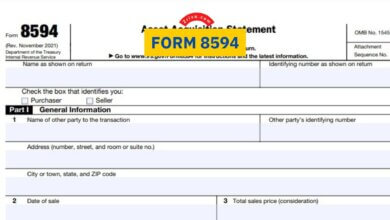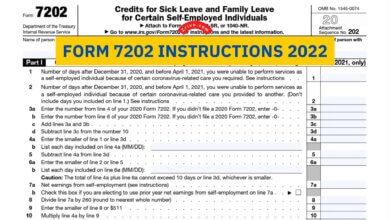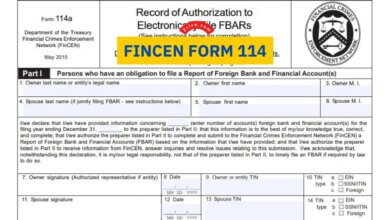Form 1095-C Instructions 2023 - 2024

Contents
The Form 1095-C Instructions is a helpful guide for employers who must fill out the form for the first time. This guide covers what information you should include on the form and which codes you should use. It also contains instructions on filing deadlines and employee share of the lowest-cost monthly premium for self-only minimum value coverage.
If your business offers self-insured group health plans, you need to understand the requirements for reporting employee share of the lowest cost monthly premium. This will help you ensure you don’t miss the mark when registering the information required for your IRS Form 1095-C.
The lowest cost silver plan for an employee is the lowest silver plan in their applicable rating area or ZIP code if that’s where they live. To determine what that silver plan is, refer to the Employer Lowest Cost Silver Plan Premium Look-up Table.
The most crucial point to remember is that the employee share of the low-cost monthly premium will not be the same for each month. The actual amount of money that the employee will pay for coverage may be less than you think. On the other hand, the actual cost of the range might be much higher. However, you can report the exact price if the employee is eligible for other health insurance arrangements.
Form 1095-C is one of several forms you will need to file with the IRS to meet your reporting obligations. You can also use Forms 1094-B and 1095-B to report information on your employer-sponsored self-insured health plan.
Codes for lines 14-16
If you are an employer with an Employee Medical Plan (EMP), you must report on Line 14 of Form 1095-C. Using the correct code is essential for this form. Some different codes can be used to explain your offer. It is crucial to understand that each code describes the type of coverage offered, and there are a few common scenarios to help you determine what to enter.
Codes describe the coverage offered to employees and their family members. The offer must be affordable and based on the minimum essential coverage. In addition, the request must be found on the lowest-cost plan.
Two sets of codes are used for the different situations described. One group is for employees not covered in an MEP, while the other is for employers in an MEP. The employee may have to share part of the premium or the employer’s responsibility, depending on the code used.
The IRS provides a code each month that describes the month’s coverage. The code for each month depends on the relationship between the employee and the employer. For example, if an employee is in a fully insured plan, the code would be 2A. Similarly, if an employee is in a Limited Non-assessment Period, the code would be 2D.
Filing deadlines
It is essential to keep in mind the filing deadlines for Form 1095-C. These filings are required for self-funded major medical plans. You must only file if your program has 250 full-time equivalent employees.
However, it is recommended that you file these forms electronically. You can use the Tax Form Management website to generate electronic copies of these forms. There are also instructions in the Tax Form Management User Guide that will help you reprint these forms.
In addition to the filing deadline, you should remember that the Affordable Care Act (ACA) requires employers to provide Form 1095-C to their full-time employees by March 2, 2024. This was previously set for January 31 but was changed to March 2 by the IRS.
Employers and health insurers can obtain an automatic 30-day extension. This applies to filing and furnishing information on the ACA and other reporting requirements. The extension will extend to the 2024 tax year but will remain in effect for future years.
For the foreseeable future, the ACA will require you to supply form 1095-C to employees by March 2. To make this deadline more bearable, consider using a document generation system. Using HRIS software can also help simplify this process.
Form 1095-C, Employer Employer-Provided Health Insurance Offer and Coverage is the tax form filed by employers reporting the employer-sponsored health coverage. Applicable Large Employers are mandated to offer health coverage to their employees and Form 1095-C is the tax form that reports the coverage offered.
Employees must report the following on Form 1095-C for each employee.
- Offered Coverage
- Employee’s Age on January 1 (for the tax year filed)
- Start of the Plan (enter the month)
It generally takes between 10 and 15 minutes to file Form 1095-C for each employee working for you. Here is line by line instructions to file Form 1095-C.
- Line 1. Enter the name of the employee.
- Line 2. Enter the Social Security Number of the employee.
- Line 3. Enter the street address of the employee.
- Line 4. Enter the city or the town of the employee.
- Line 5. Enter the state of the employee.
- Line 6. Enter the ZIP code of the employee.
- Line 7. Enter the name of the employer.
- Line 8. Enter the EIN of the employer.
- Line 9. Enter the street address of the employer.
- Line 10. Enter the telephone number of the employee.
- Line 11. Enter the city of the employer.
- Line 12. Enter the state of the employer.
- Line 13. Enter the ZIP code of the employer.
- Line 14. Enter the offer of coverage for all months.
- Line 15. Enter the amount of the employee’s required contribution for all months.
- Line 16. Enter the Section 4980H Safe Harbor and/or other relief code for all months.
- Line 17. Enter the ZIP code for all months.





